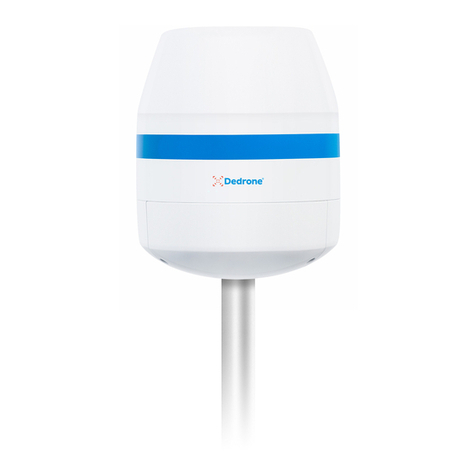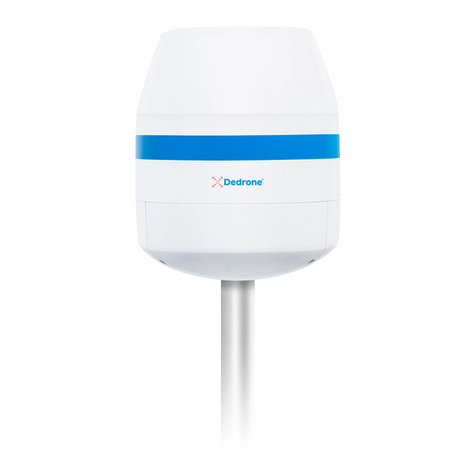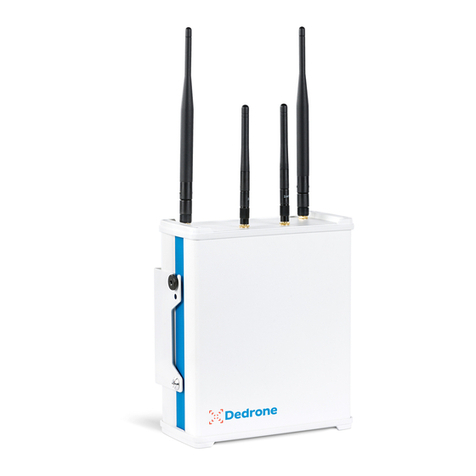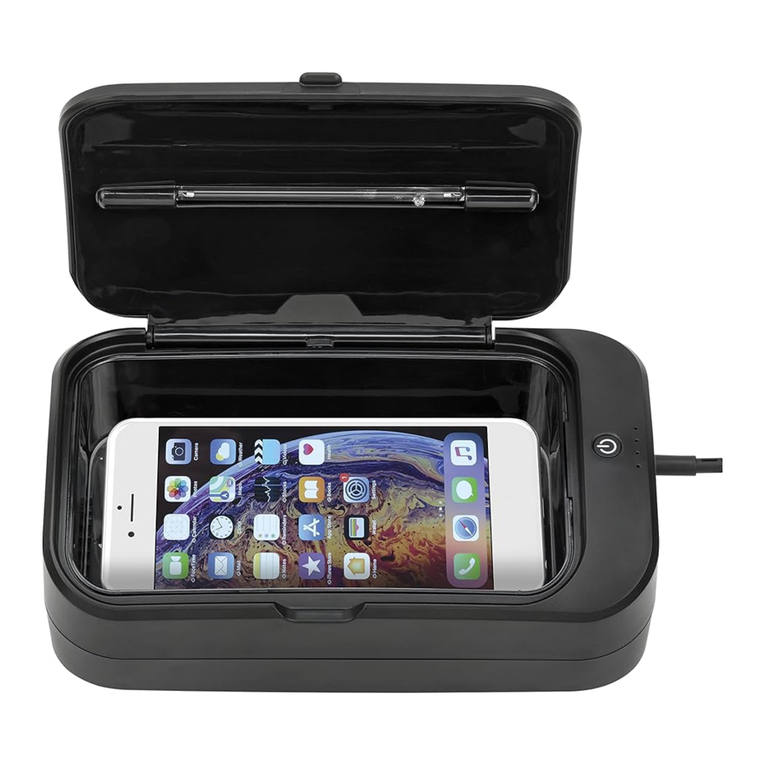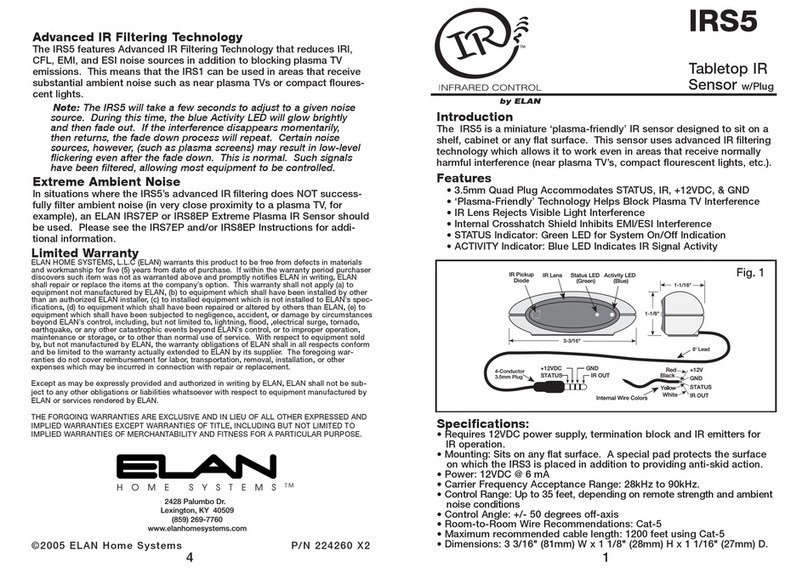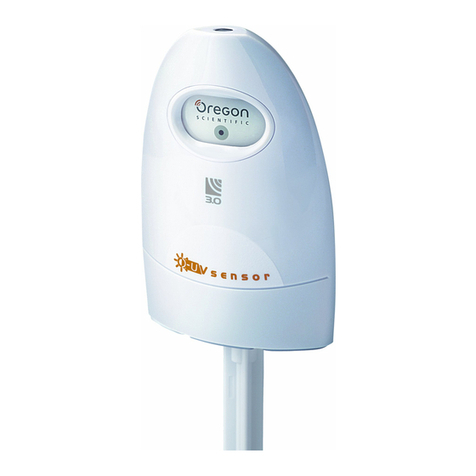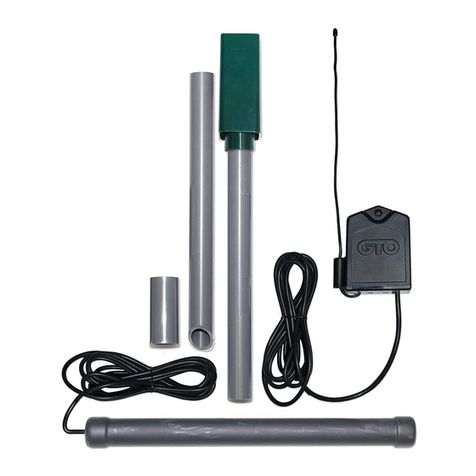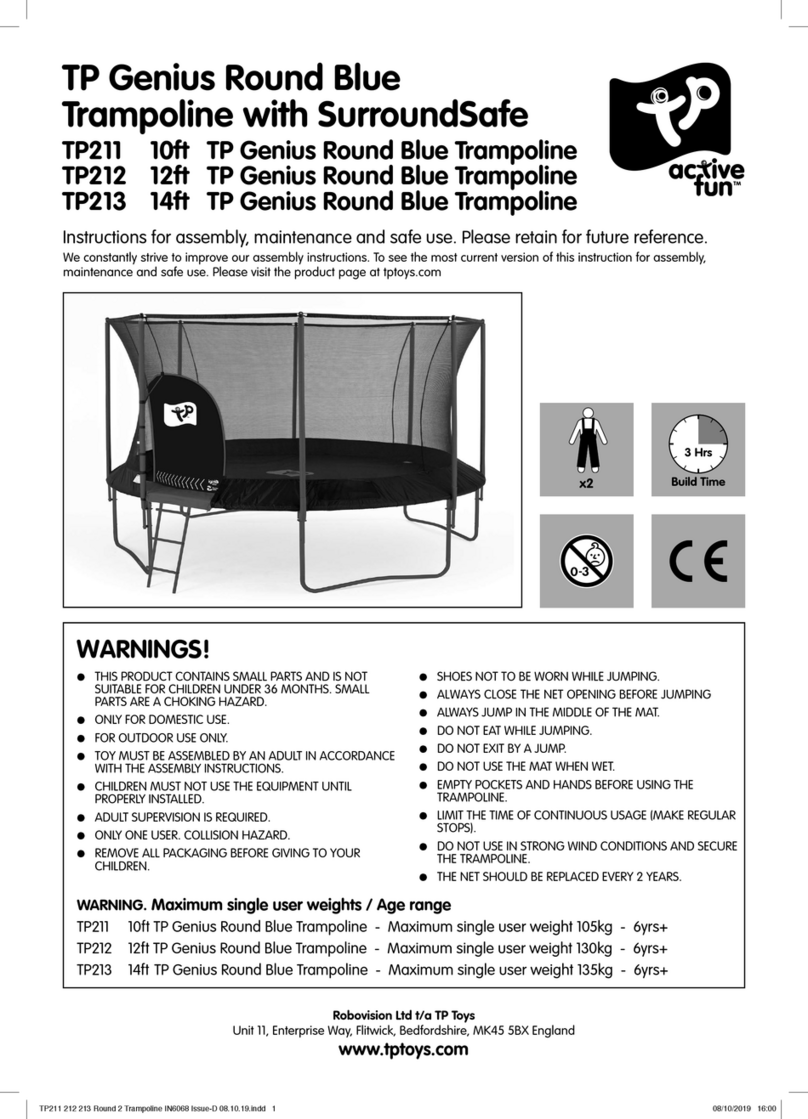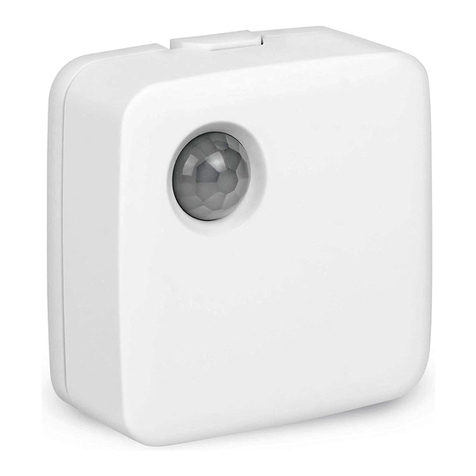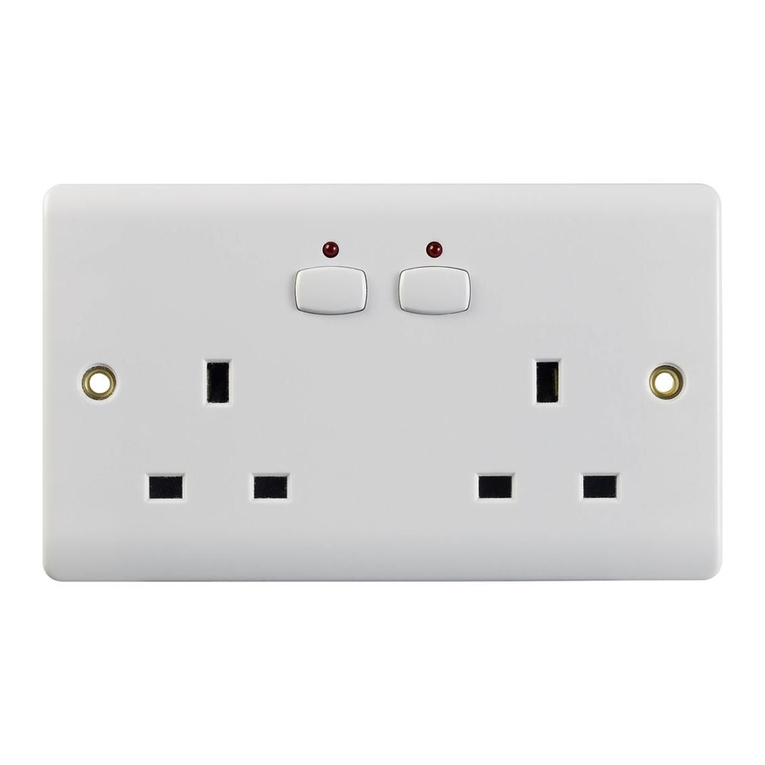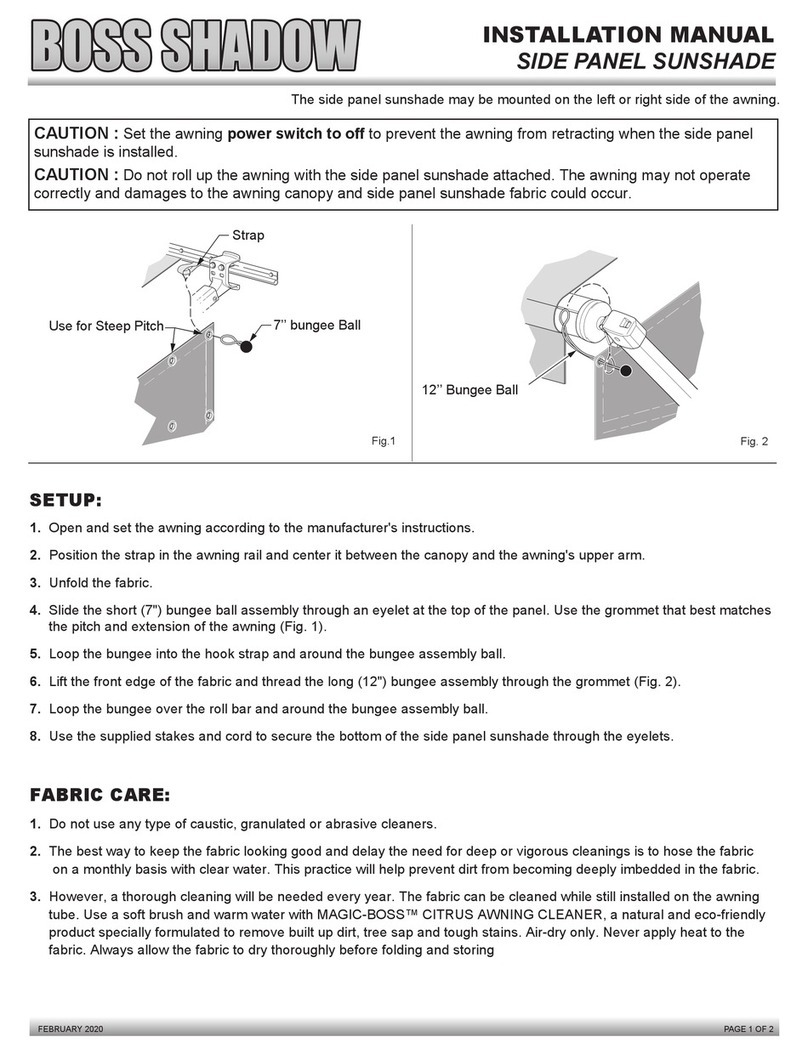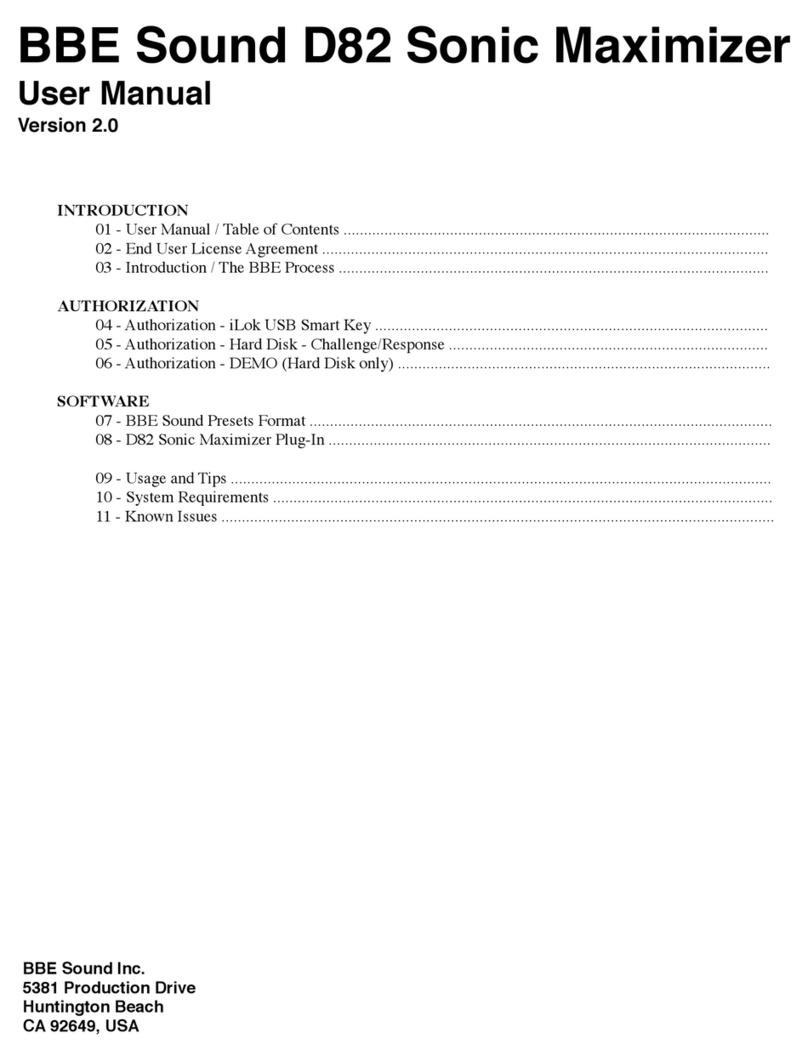Dedrone RF-300 User manual

IM-Inst-RF30009en ENGLISH
INSTALLATION
Manual
RF-300

Dedrone
2 IM-Inst-RF30009en
Legal Provisions
The information contained in these documents is the property of Dedrone GmbH. Any
publication, whether in whole or in part, requires prior written approval by Dedrone GmbH.
Internal reproduction used solely for the purpose of product evaluation or other proper use is
allowed and does not require prior approval.
The declaration of conformity is available on request at support@dedrone.com.
Copyright
This manual is the intellectual property of Dedrone GmbH and is protected by copyright. All
rights reserved.
Dedrone GmbH
Miramstraße 87
34123 Kassel
Germany
Fon +49 561 861799-0
Fax +49 561 861799-111
Email info@dedrone.com
©2018 Dedrone GmbH. All rights reserved.

Dedrone
IM-Inst-RF30009en 3
Content
1Safety.......................................................................................................................................4
1.1 Symbols............................................................................................................................................. 4
1.2 Intended Use .................................................................................................................................... 4
1.3 Safety Information ......................................................................................................................... 5
2The RF-300 .............................................................................................................................6
3Unpacking ............................................................................................................................... 7
4Scope of Delivery................................................................................................................... 7
5Select the Mounting Place ...................................................................................................8
5.1 Mounting Location.......................................................................................................................... 8
5.1.1 Detection Conditions .......................................................................................................... 8
5.1.2 Direction Finding and Localization Conditions.............................................................. 9
5.2 Overvoltage Protection................................................................................................................ 11
5.3 Mounting Surface........................................................................................................................... 11
5.4 Mounting Orientation.................................................................................................................... 11
5.5 Mounting Device ............................................................................................................................12
6Installation............................................................................................................................ 12
6.1 Power Supply ..................................................................................................................................12
6.2 Required Tools ................................................................................................................................12
6.3 Cable Requirements ..................................................................................................................... 13
6.4 Cable Preparation.......................................................................................................................... 13
6.5 Installation with Pole Mount...................................................................................................... 14
7Integrate RF-300 in your DroneTracker .......................................................................... 16
8Cleaning ................................................................................................................................ 17
9Decommissioning ................................................................................................................18
9.1 Shut Down the RF-300................................................................................................................ 18
9.2 Dismantling .................................................................................................................................... 18
9.3 Disposal ........................................................................................................................................... 18
10 Technical Data......................................................................................................................19

1 Safety Dedrone
4 IM-Inst-RF30009en
1Safety
1.1 Symbols
Symbol Explanation
Indicates a situation which, if not avoided, can result in property damage
Information that is important for a specific goal, but is not safety-relevant
Indicates a requirement for meeting a specific goal
Desired result
A problem that might occur
Action to resolve a problem
1.2 Intended Use
The RF-300 is a passive, network-attached sensor for the detection and direction finding of
radio frequencies (RF) and Wi-Fi signals. In combination with two or more RF-300 it is able to
determine the position of a drone by the RF signals. The RF sensor detects targeted radio
signals, identifies their direction and sends the data, along with an alert to the DroneTracker
System.
The RF-300 is intended for civil commercial and private use in conjunction with a DroneTracker
System.
The RF-300 is suitable for outdoor use.
Use this product only in accordance with the information provided in the enclosed
documentation and with the locally applicable legal standards and directives. Any other
application may cause personal injury or property damage.
Any use of the product other than that described in the intended use section does not qualify
as appropriate. The enclosed documentation is an integral part of this product. Keep the
documentation in a convenient place for future reference and observe all instructions
contained therein.
The type label must remain permanently attached to the product.
FCC and IC
This device complies with Industry Canada licence-exempt RSS standard(s) and complies with
Part 15 of the FCC Rules. Operation is subject to the following two conditions:
1. This device may not cause harmful interference.
2. This device must accept any interference received, including interference that may
cause undesired operation.

Dedrone 1 Safety
IM-Inst-RF30009en 5
Note:
This equipment has been tested and found to comply with the limits for a Class B digital
device, pursuant to Part 15 of the FCC Rules. These limits are designed to provide reasonable
protection against harmful interference in a residential installation. This equipment generates,
uses and can radiate radio frequency energy and, if not installed and used in accordance with
the instructions, may cause harmful interference to radio communications. However, there is
no guarantee that interference will nopersonal t occur in a particular installation. If this
equipment does cause harmful interference to radio or television reception, which can be
determined by turning the equipment off and on, the user is encouraged to try to correct the
interference by one or more of the following measures:
•Reorient or relocate the RF-300.
•Increase the separation between the equipment and receiver.
•Connect the equipment into an outlet on a circuit different from that to which the
receiver is connected.
•Consult the dealer or an experienced radio/television technician for help.
WARNING: MODIFICATION OF THIS DEVICE TO RECEIVE CELLULAR RADIOTELEPHONE
SERVICE SIGNALS IS PROHIBITED UNDER FCC RULES AND FEDERAL LAW.
Caution!
To prevent permanent exposure, the device should be installed and operated
with a minimum distance of 20 cm (7.87 in) between the device and your body.
1.3 Safety Information
Read, follow and retain all of the following safety instructions. Heed all warnings on the unit
and in the operating instructions before operation.
Warning! Setup should be carried out by trained personnel only, in accordance
with the national electric code, ANSI/NSPA, and all local country codes.
Do not attempt to service this device yourself. Refer all servicing to qualified
service personnel. This device has no user-serviceable internal parts.
Whenever any damage to the device has occurred, unplug the devices from the
power source by disconnecting the patch cable and refer servicing to qualified
service personnel. Such damages can be:
•the patch cable is damaged
•an object has fallen on the device
•the device has been dropped, or its enclosure has been damaged
•the device does not operate normally when the user follows the operating
instructions correctly
Adjust only those controls specified in the operating instructions. Improper
adjustment of other controls may cause damage to the unit.
Despite careful construction, electrical devices can cause fires. Do not mount the
RF-300 in areas containing highly flammable materials or gases. Do not mount the
RF-300 in a potentially explosive atmosphere.
Do not install product near any heat sources such as radiators, heaters, exhaust air
systems or other equipment (including amplifiers) that produce heat.

2 The RF-300 Dedrone
6 IM-Inst-RF30009en
2The RF-300
The RF-300 is a passive, network-attached sensor for the detection and direction finding of
radio frequencies (RF) and Wi-Fi signals. In combination with two or more RF-300 it is able to
determine the position of a drone by the RF signals. The RF sensor detects targeted radio
signals, identifies their direction and sends the data, along with an alert to the DroneTracker
System.
Parts of the RF-300
A Power button E Antenna cover
B Knurled head screw with sealing washer F Network socket
C RF Mounting Plate G Wi-Fi-antenna
D Knurled nut
It scans a wide frequency band for radio frequencies and classifies them. The data is recorded
and available on the user interface DroneTracker UI.
A
G
F
E
B
D
C

Dedrone 3 Unpacking
IM-Inst-RF30009en 7
3Unpacking
This equipment should be unpacked and handled with care. Check the exterior of the packaging
for visible damage. If an item appears to have been damaged in shipment, notify the shipper
immediately.
4Scope of Delivery
Verify that all the parts listed in the scope of delivery are included. If any items are missing,
notify your Dedrone Partner.
Do not use this product if any component appears to be damaged. Please contact Dedrone in
the event of damaged goods.
1 x RF-300
1 x Wi-Fi antenna
1 x RF Mounting Plate (preassembled)
2 x Knurled head screw with sealing washer (preassembled)
2 x Knurled nut (preassembled)
1 x Pole Mount
2 x Long strap
2 x Short strap
1 x Bag with 4x screws Torx M5, 8x flat washer, 4x nuts
1 x Orientation stencil
1 x Installation manual
1 x Bag with 1x environmentally sealed Ethernet crimp connector, 1x RJ45 plug
The original packing carton is the safest container in which to transport the unit and must be
used if returning the unit for service. Save it for possible future use.

5 Select the Mounting Place Dedrone
8 IM-Inst-RF30009en
5Select the Mounting Place
5.1 Mounting Location
The position of the RF-300 has strong impact to the detection and direction finding range and
accurancy. The RF-300 is intended for pole mounting. Make sure that a suitable pole is
available (diameter between 1.2 in to 8.66 in (40 mm to 220 mm)) and the Antenna Cover
extend beyond the pole.
The detection is the precondition for the direction finding.
5.1.1 Detection Conditions
For ideal results the location should fulfill the following conditions:
□Clear view over the area
□Exposed, elevated position (minimum 10 ft (3 m))
Do not install the device nearby the following objects:
•Metal surfaces or vaporized glass
Disturbs the detection and prevents the localization
•Walls
These share the detection area and prevent classification of signals behind the wall
•Base station and other strong signale sources
The detected signals are getting interfered
•Any excessive heat sources
•Any overhead power lines, power circuits, or electrical lights
electrical discharge can damage the device.
Select a secure installation location and mounting position for the device. Ideally, this is a
location where the device cannot be interfered with, either intentionally or accidentally.
Note the properties of each RF-300.This is needed for service and for correct
configuration. You can find all information on the type label on the backside of the
RF-300.
We recommend the table below. The following information is important:
•Serial Number
•MAC Address
•Position
Serial Number MAC Address Position and Orientation

Dedrone 5 Select the Mounting Place
IM-Inst-RF30009en 9
5.1.2 Direction Finding and Localization Conditions
For accurate localization results, follow the guidance below in addition to the Detection
Conditions (see 5.1.1 Detection Conditions, page 8).
The position is determined by the intersection of at least two directions. Therefore minimum
two RF-300 sensors are required for localization, but we recommend at least three RF-300
sensors as this significantly reduces localization errors.
For best localization results, all RF-300 sensor should be installed at the same height.
Position of the sensors to each other
To localize a drone an
intersection of the directions
from at least two sensors is
needed.
Localization is not possible in
the case where two RF-300s
are aligned.
This is the blind area of two
sensors.
Both RF-300s detects a
direction in alignment to the
left. The overlapping area
covers the complete direction
beam of the other RF-300. The
position can’t be determind.
Both RF-300s detect a direction
in alignment to the right. The
overlapping area covers the
complete direction beam of the
other RF-300. The position can’t
be determind.
?
?

5 Select the Mounting Place Dedrone
10 IM-Inst-RF30009en
Both RF-300s detect a direction
against each other. No exact
position can be determined.
With three RF-300s there is no
blind area. The third RF-300s
can always varify the area of
intersection.
Distances between the RF-300s
The distance between the RF-300 usually should be 330 ft to 1,310 ft (100 m to 400 m).
Distance between the RF-300
□Choose the postion depending on your monitoring focus. Increase the distance between
the sensors to increase the accuracy at further distances.
□Localization accuracy increases as the drone gets closer to the sensors.
330 ft to 1,310 ft
(100 m to 400 m)
330 ft to 1,310 ft
(100 m to 400 m)
330 ft to 1,310 ft
(100 m to 400 m)
?

Dedrone 5 Select the Mounting Place
IM-Inst-RF30009en 11
5.2 Overvoltage Protection
For safe mounting in an exposed position overvoltage protection must be observed.
Ensure that the pole is connected to the lightning conductor of the building. The RF-300 itself
must not be grounded directly. The lightning conductor must be installed at least 1.5 m above
the RF-300.
Lightning Protection Installation with a RF-300
Ensure that the location has the appropriate clearance from power and lightning conductors,
in accordance with NEC725 and NEC800 (CEC Rule 16-224 and CEC Section 60).
5.3 Mounting Surface
Make sure the selected mounting surface is capable of supporting the combined weight of the
RF-300 (6.8 lb (3.1 kg)) and mounting hardware under all expected conditions of load, vibration,
and temperature.
5.4 Mounting Orientation
Important for a good result is the vertical alignment of the device and that the Antenna Cover
extend beyond the pole.
Do not tilt the device.
The Wi-Fi antenna has to be orientated to the ground. Do not bend the Wi-Fi antenna.

6 Installation Dedrone
12 IM-Inst-RF30009en
5.5 Mounting Device
To mount the RF-300 with another mount as the supplied, note the following requirements
for the mounting equipment:
□Licensed for outdoor use
□Safe and stiff load of 6.8 lb (3.1 kg)
□Matching for the holes of the RF Mounting Plate
Dimensioning of the holes of the RF Mounting Plate
A Holes for the pole mount
6Installation
6.1 Power Supply
The RF-300 does not need any additional power supply connection. The power supply is
provided by the patch cable over active PoE+ (802.3at).
□Make sure, that your network has activated active PoE+ (802.3at).
6.2 Required Tools
□Screwdriver
□Hex key: 2.5 mm and 4 mm
□Socket wrench: 8 mm
□Crimping tool
For an environmentally sealed connection to the RF-300, it's necessary to crimp the
supplied connector to the laid patch cable (see 6.4 Cable Preparation, page 13).
□Ladder or lift truck, depending on the mounting location
150
95
35
80
A
A
A
A

Dedrone 6 Installation
IM-Inst-RF30009en 13
6.3 Cable Requirements
Type Cat-6 Patch Cable
Recommendation: Cat-7 Patch Cable
Maximum Length 328 ft (100 m)
For longer distances a PoE extender is required
External Diameter 3.5 mm – 7.5 mm
6.4 Cable Preparation
For a weather resistant connection to the RF-300, it is necessary to crimp the supplied
environmentally sealed Ethernet connector to the patch cable.
1Cut the RJ45 plug off the laid cable. Keep the cut off plug, to check the wiring
standard later.
2Screw the gland off the connector body.
3Thread the gland nut and the connector body
onto the cable.
4Remove the cable jacket carefully. Therefore take care not to damage the braid and
foil.
5Fold back the braid and foil over the cable jacket.
Note: 25 mm (1”) of free conductors are needed.
6Unravel the conductors, sort the conductors in
the required wiring standard (568-A or 568-B)
and push the conductors all the way in the plug.
The required wiring standard can be checked on
the previous cut-off RJ45 plug.
Position 568-A 568-B
1
White/Green
White/Orange
2
Green
Orange
3
White/Orange
White/Green
4 Blue Blue
5
White/Blue
White/Blue
6
Orange
Green
7
White/Brown
White/Brown
8 Brown Brown
7Crimp the RJ45 plug with the crimping tool.
8Push down the latching clip of the plug and press the connector body all the way to
the stop over the RJ45 plug.
9Put the gland nut over the connector body and screw down the gland nut on the
connector body.
1
Front Face View

6 Installation Dedrone
14 IM-Inst-RF30009en
6.5 Installation with Pole Mount
Requirements:
□Desired mounting place fulfills the requirements (see 5 Select the Mounting Place, page 8)
□Diameter of the pole: between 1.2 in to 8.66 in (40 mm to 220 mm)
Procedure:
1Loosen the knurled head screws on both sides of the
RF-300 and unhook the RF-300 from the RF
Mounting Plate.
2Screw the RF Mounting Plate onto the Pole Mount.
Therefore note the following:
•Use the shown holes.
•The screw guidance of the RF Mounting Plate
shows to the top.
•Put a flat washer between
oscrew head and RF Mounting Plate and
onut and Pole Mount.
•Screw down the nut with a 8 mm socket
wrench.
3Run the straps through the slashes of the Pole
Mount.
4Attach the the Pole Mount to the pole:
•Hold the Pole Mount with the RF Mounting Plate at the end of the pole. Thereby
make sure, that the Antenna Cover extend beyond the pole.
•Lay the straps around the pole.
•Put the strap in the slash under the screw and tighten it appropriately.

Dedrone 6 Installation
IM-Inst-RF30009en 15
5Hook the RF-300 in the screw guidance of the RF
Mounting Plate.
6Screw down the 2 knurled head screws carefully
at both sides in the lower holes. Thereby be careful
not to tighten the screws until the RF Mounting
Plate does not deform.
7Screw the antenna on the screw thread at the bottom of the RF-300. Do not bend
the antenna, it should be aligned to the ground.
8An accurate alignment of the sensor is a prerequisite for a good direction
finding result.
Lay the orientation stencil on the RF-300 and check the orientation of the RF-300.
Therefor use notch and bead sights of the orientation stencil. Remember the target
object in the landscape. This is helpful for the correct orientation of the sensor in the
sitemap of the DroneTracker UI (see 7 Integrate RF-300 in your DroneTracker, page
16).
9Make sure that the pole is grounded (see Reqirements Overvoltage protection,
page 9)
10 Connect the patch cable to the RF-300 and turn the connector gland until it is locked
(for a correct cable preparation see 6.4 Cable Preparation, page 13).
If the patch cable is connected to the network, the RF-300 boots automatically
and after approximately 1 second the blue button at the RF-300 illuminates,
indicating that the hardware is ready.
The patch cable is connected to the network and the RF-300 does not boot
automatically after approximately 1 second?
Push the blue button and wait for it to illuminate.
Make sure, that active PoE+ (802.3at) is activated in your network.

7 Integrate RF-300 in your DroneTracker Dedrone
16 IM-Inst-RF30009en
7Integrate RF-300 in your DroneTracker
To connect to the RF-300, it is necessary to know the IP address of the RF-300. When the RF-
300 is connected to your network, the router or DHCP-Server automatically assigns an IP
address to the RF-300. To find out the IP address, you have two important information:
•MAC Address of the RF-300 (on the type label and should be noted in chapter 5.1 Mounting
Location, page 8)
•The network name of the RF-300 always starts with DR…
In case of difficulties please consult your network administrator.
Unaccurate alignment distorts the direction finding result.
An accurate alignment of the sensor is a prerequisite for a good direction finding
result.
Align the RF-300 with correct GPS coordinates and azimuth accordingly to the
assembly.
Requirements:
□RF-300 is installed
□RF-300 is connected to the network
□The power supply is working and the button at the RF-300 illuminates blue
□The IP address of the RF-300 is known
Procedure:
1Start your web-browser.
For an optimal use, Dedrone recommends Chrome or Firefox.
2Enter the IP address of the DroneTracker Server in the address field of your browser.
3Log in the DroneTracker UI. The default login credentials are:
User: admin Password:
dedrone
The DroneTracker user interface appears.
4Choose OPTIONS > Site Configuration.
5Choose [Add] > Multi Sensor / RF Sensor.
The window Discovered Sensors appears.
6Select the desired RF-300 and choose [OK].
The RF-300 appears in the Site Explorer.

Dedrone 8 Cleaning
IM-Inst-RF30009en 17
7For an numeric positioning and alignment of the sensor, choose the element on the
map and enter the values. The displayed arrow helps for the azimuth alignment,
accordingly to the target of the Orientation Stencil.
For an approximate positioning and alignment of the sensor, drag and drop the
symbol or arrow and move it to the desired position.
8To lock the settings, choose the option Lock settings.
9To sort the RF-300 in the Site Explorer, drag and drop the element to the desired
position.
10 Choose [Save changes].
The window Site Configuration disappears.
For further information consult chapter “First Steps” of the integrated online help in
the DroneTacker UI.
8Cleaning
Wrong cleaner damages the housing
The wrong cleaner can damage the housing or antenna of the RF-300. Never use glass cleaner
or other solvent cleaner to clean the RF-300.
•Use solvent-free cleaner to clean the RF-300.

9 Decommissioning Dedrone
18 IM-Inst-RF30009en
9Decommissioning
9.1 Shut Down the RF-300
RF-300 breaks
By disconnecting the cable without shut down the RF-300, the RF-300 could break.
•Always shut down the RF-300 before disconnecting the cable.
You have the possibility to shut down the RF-300 via the DroneTracker user interface or
directly on the sensor.
Shut down via DroneTracker user interface:
1Log in to the DroneTracker UI.
2Choose OPTIONS > Site Configuration.
3Right-click on the desired RF-300.
4Choose System > Shutdown hardware.
Shut down directly at the RF-300:
Briefly press the Power button at the RF-300.
The RF-300 shuts down and the blue light goes out.
9.2 Dismantling
Hot surface during operation
Depending on the evironment the surface of the RF-100 could get hot.
•Before dismantling the device wait 30 min after shut down the RF-100.
9.3 Disposal
Dispose the RF-300 at the end of its service life in accordance with the disposal
regulations for electronic waste which apply at the installation location at that
time. Alternatively, send it back to Dedrone GmbH with shipping paid by sender,
and labeled "ZUR ENTSORGUNG" ("FOR DISPOSAL").

Dedrone 10 Technical Data
IM-Inst-RF30009en 19
10 Technical Data
Range (line of sight) Up to 0.65 mi (1.0 km)
Up to 1.0mi (1.5 km)in ideal conditions
Accurancy of Direction Finding *±5° (mean error)
Geolocalization With two or more RF-300, also through Wi-Fi signals
Device Type Sensor
Radio Frequency Omnidirectional passive detection, classification and
direction finding
L x W x H 7.7” x 3.7” x 14.4” (195 mm x 95 mm x 365 mm)
Weight 6.8 lb (3.1 kg)
Ingress Protection Rating IP65 **
Operating Temperature -4 °F to +131 °F (-20 °C to +55 °C)
Power Supply PoE+ (802.3at)
Power Consumption 18 W (typical)
Connectivity via LAN in existing IT infrastructure
Software Configuration, Operation and
Alarm Notification
Via DroneTracker software
(requires software >= 3.1 and valid license)
Software Updates Firmware and DroneDNA updates via cloud-based
database connection
* in the 2.4 Ghz band
** No ingress of dust; complete protection against contact (dust tight). A vacuum must be applied. Water projected by a nozzle (6.3
mm) against enclosure from any direction shall have no harmful effects.

Other manuals for RF-300
1
Table of contents
Other Dedrone Accessories manuals
Popular Accessories manuals by other brands

Wild Country
Wild Country REVO How to use
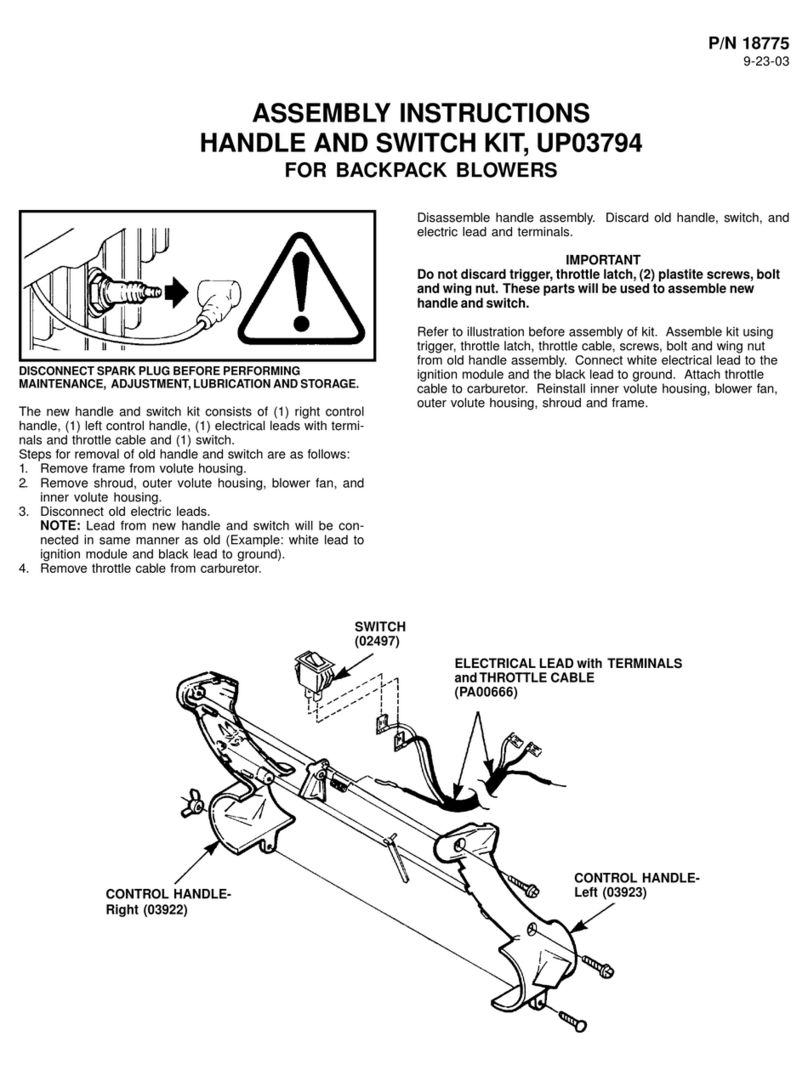
Homelite
Homelite 18775 Assembly instructions

Holz-Hoerz
Holz-Hoerz pedalo- Rola-Bola Fun user manual

AWNLUX
AWNLUX W5700 installation instructions

IFM Electronic
IFM Electronic efector 200 OW Series installation instructions

Philips
Philips M1131A Instructions for use
